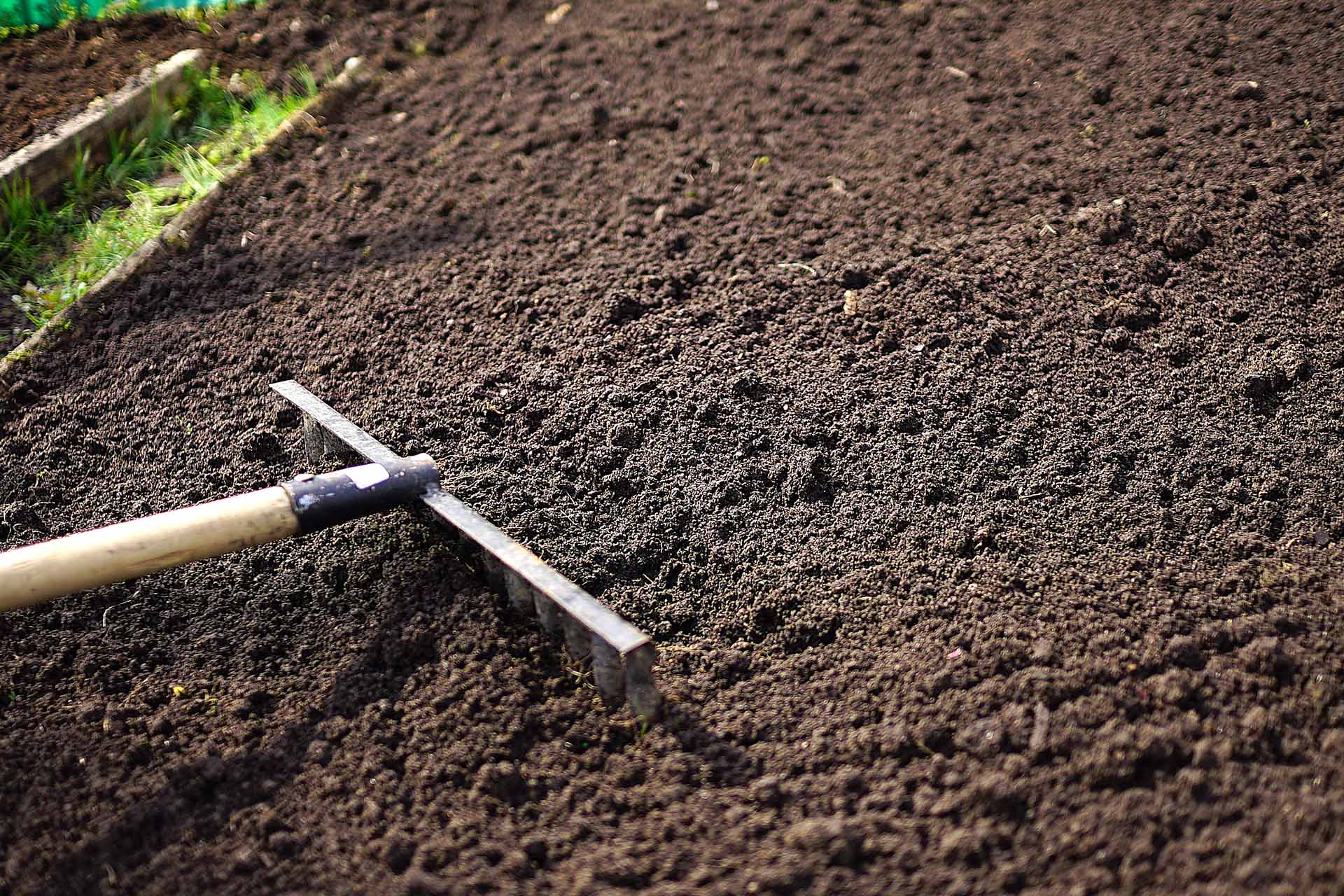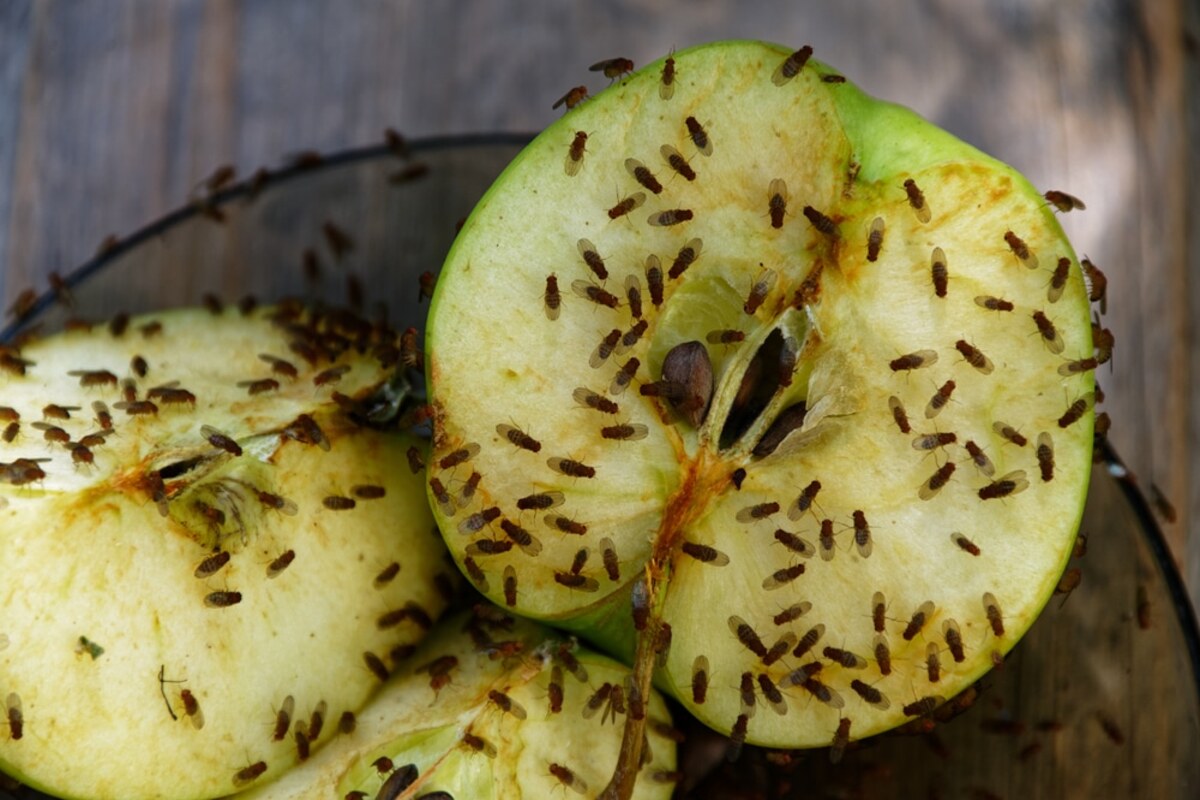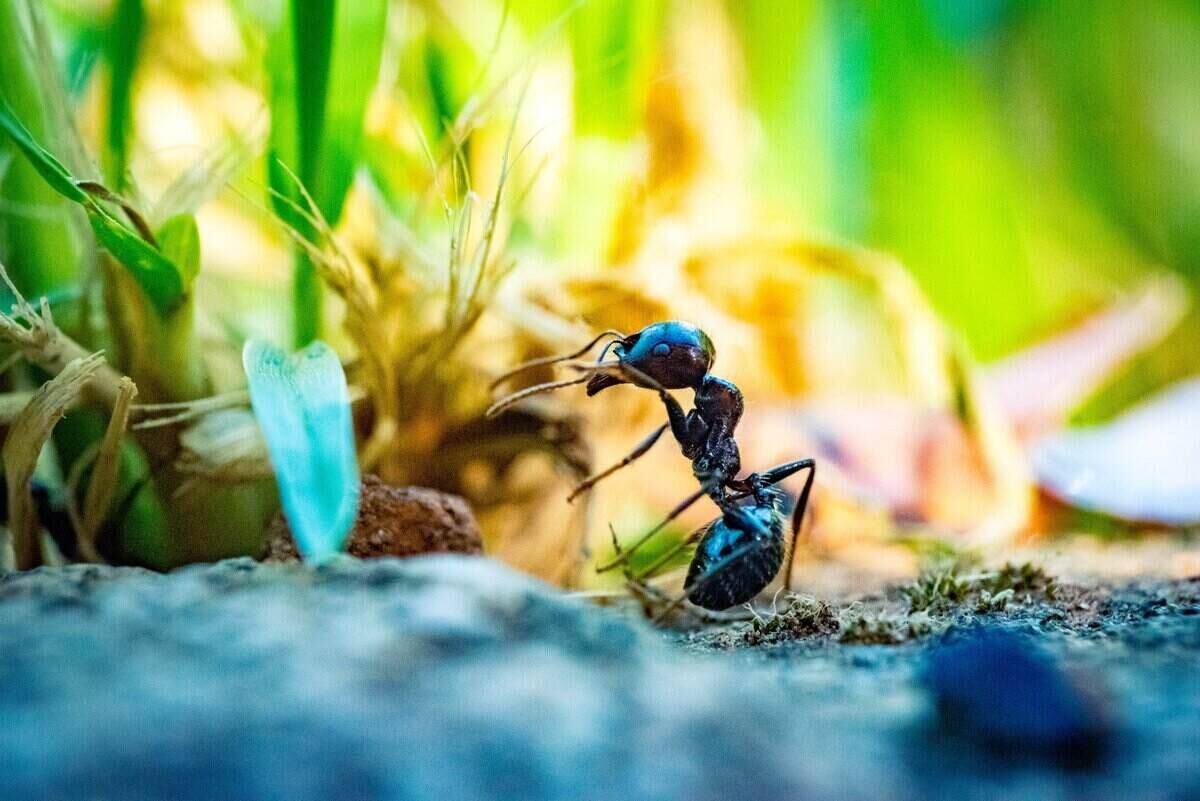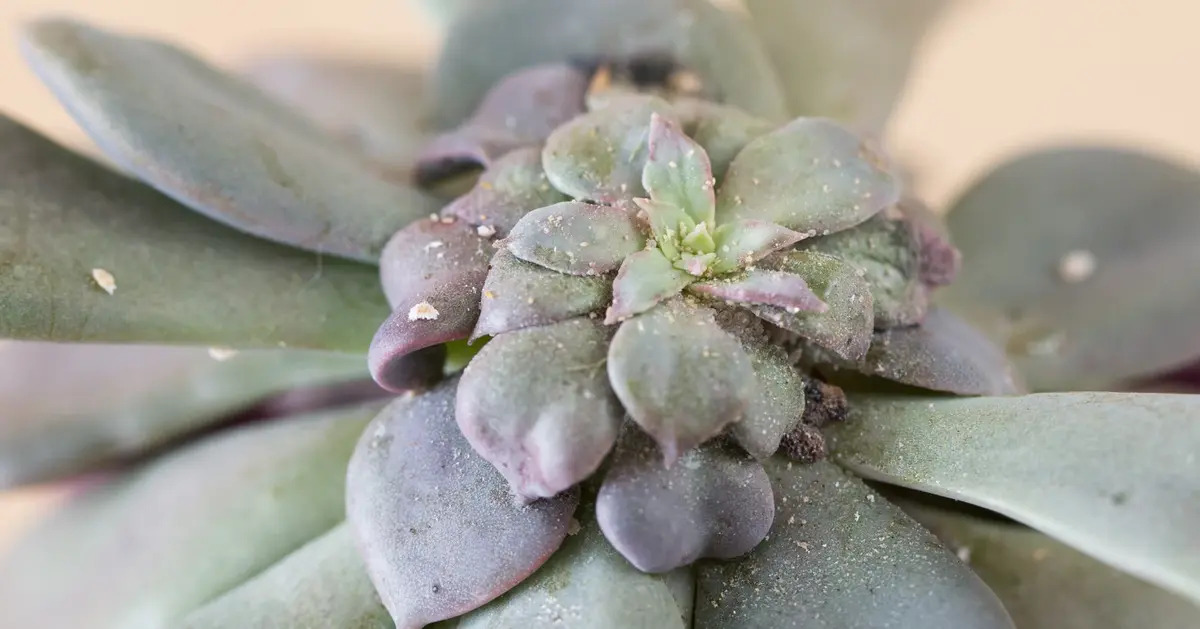Home>Gardening Tips and Tricks>Problem Solving>How To Get Rid Of Nematodes In Soil


Problem Solving
How To Get Rid Of Nematodes In Soil
Published: February 5, 2024
Learn effective techniques for problem solving to eliminate nematodes in your soil. Find out how to get rid of nematodes and improve your garden's health.
(Many of the links in this article redirect to a specific reviewed product. Your purchase of these products through affiliate links helps to generate commission for Chicagolandgardening.com, at no extra cost. Learn more)
Table of Contents
- Introduction
- Understanding Nematodes
- Signs and Symptoms of Nematode Infestation
- Cultural Practices to Reduce Nematode Population
- Crop Rotation and Nematode Management
- Soil Solarization for Nematode Control
- Applying Organic Amendments
- Using Biocontrol Agents against Nematodes
- Chemical Nematicides: Pros and Cons
- Conclusion
Introduction
Welcome to our comprehensive guide on how to get rid of nematodes in soil. Nematodes are microscopic, worm-like organisms that can cause significant damage to plants and crops. They are found in nearly every type of soil and can be a persistent problem for gardeners, farmers, and homeowners. If left untreated, nematodes can lead to stunted growth, reduced yields, and even plant death.
Understanding nematodes and how they affect plants is crucial for effective management. By implementing proper cultural practices, utilizing natural remedies, and considering chemical options, you can successfully control nematode populations in your soil and promote healthy plant growth.
In this guide, we will explore various strategies and techniques to combat nematodes. We will discuss the signs and symptoms of nematode infestation, cultural practices to reduce nematode populations, crop rotation techniques, soil solarization, and the use of organic amendments. Additionally, we will explore the role of biocontrol agents and the pros and cons of chemical nematicides in nematode management.
Whether you are a passionate gardener growing a small vegetable patch or a farmer managing acres of crops, this guide will provide you with the necessary knowledge and tools to effectively tackle nematodes in your soil. Let’s dive in and learn how you can regain control of your soil health and protect your plants from the damage caused by nematodes.
Understanding Nematodes
Nematodes are tiny, thread-like worms that inhabit the soil. They can range in size from less than 1mm to several centimeters in length. There are thousands of different species of nematodes, but not all of them are harmful to plants. In fact, many nematodes are beneficial and play important roles in nutrient cycling and soil health.
However, there is a group of nematodes known as plant-parasitic nematodes that pose a significant threat to plant growth. These nematodes feed on the roots of plants, causing damage and impairing their ability to absorb water and nutrients. This can result in stunted growth, yellowing leaves, and decreased crop yields.
Plant-parasitic nematodes have different feeding habits, which classify them into different categories. Ectoparasitic nematodes feed on the outer surface of roots, while endoparasitic nematodes penetrate the root tissue and feed from within. Sedentary nematodes stay within a single feeding site, while migratory nematodes move freely in the soil and invade multiple roots.
Nematodes can reproduce rapidly, with some species having the ability to produce hundreds of eggs in a single generation. They can survive in the soil for extended periods, waiting for suitable host plants to feed on. Environmental factors such as temperature, moisture, and soil type can influence their population dynamics.
It is important to note that nematodes are not visible to the naked eye, making it difficult to detect their presence in the soil. Diagnostic tools such as soil sampling and laboratory testing are often used to confirm nematode infestations.
Understanding the specific nematode species that are present in your soil is essential for implementing targeted management strategies. Different nematode species have different host preferences and may require specific control methods.
In the next sections, we will explore various strategies to combat nematodes in the soil. By utilizing a combination of cultural practices, organic amendments, biocontrol agents, and, if necessary, chemical nematicides, you can effectively reduce nematode populations and protect your plants from their damaging effects.
Signs and Symptoms of Nematode Infestation
Identifying the signs and symptoms of a nematode infestation is crucial for early detection and effective management. Although nematodes are not visible to the naked eye, their presence can be inferred through the following indicators:
- Stunted Growth: Plants infected with nematodes often exhibit stunted growth, with smaller and weaker stems and leaves compared to healthy plants.
- Yellowing Leaves: Nematode-infested plants may develop yellow or chlorotic leaves, indicating a reduced ability to absorb nutrients due to root damage.
- Root Galls or Swellings: Some nematode species cause the formation of galls or swellings on the roots. These abnormal growths disrupt the root system’s functionality, leading to nutrient deficiencies and water uptake issues.
- Root Lesions or Necrosis: Nematodes can cause lesions or necrosis on the roots, visible as darkened areas or tissue decay. Infected roots are often weak and prone to diseases.
- Root Knots: Certain species of nematodes induce the formation of root knots, which are small, round, swollen areas on the roots. These knots impede the flow of water and nutrients, contributing to plant stress.
Additionally, the presence of nematodes can lead to secondary symptoms such as wilting, reduced fruit production, and increased susceptibility to fungal or bacterial infections.
It’s important to note that these symptoms can also be caused by other factors such as nutrient deficiencies, improper watering, or other plant diseases. Therefore, it is crucial to conduct further investigations to confirm the presence of nematodes.
To diagnose a nematode infestation accurately, you can take soil samples from the affected area and send them to a laboratory for analysis. Nematode extraction and identification techniques can be employed to determine the species and population density of nematodes in your soil.
By being aware of the signs and symptoms associated with nematode infestations, you can take timely action to mitigate their effects and protect your plants from further damage. In the next sections, we will discuss various management strategies to effectively control nematodes in your soil.
Cultural Practices to Reduce Nematode Population
Implementing cultural practices that create unfavorable conditions for nematode growth and reproduction is an effective and sustainable approach to reduce nematode populations in the soil. These practices focus on creating a healthy soil environment that supports plant growth while minimizing nematode damage. Here are some cultural practices to consider:
- Crop Rotation: Rotating crops is a fundamental practice that helps break the nematode life cycle. Different crop species have varying susceptibility to nematodes, so rotating crops can disrupt nematode reproduction and reduce their populations in the soil. Ideally, select non-host crops for rotation and avoid planting the same crop or closely related crops in the same area consecutively.
- Cultivar Selection: Choosing nematode-resistant plant varieties can provide a proactive defense against nematode infestations. Many crop varieties have been developed with resistance to specific nematode species. Consult with your local agricultural extension office or nursery to identify resistant cultivars suitable for your region and crop type.
- Sanitation: Practicing good sanitation measures can help prevent the spread and buildup of nematodes. Remove and destroy crop residues, weeds, and any other plant debris that may harbor nematodes. Implement proper cleaning and sterilization techniques on gardening tools and equipment to avoid introducing nematodes from one area to another.
- Soil Fertility Management: Maintaining optimal soil fertility and nutrition levels promotes the overall health and vigor of plants, making them more resilient to nematode damage. Conduct regular soil testing and apply appropriate fertilizers and amendments based on the specific nutrient needs of your crops. Well-nourished plants are better equipped to tolerate and recover from nematode infestation.
- Mulching: Applying organic mulches, such as straw or wood chips, to the soil surface can create a physical barrier that discourages nematode movement and prevents them from reaching the roots. Moreover, organic mulches provide a beneficial habitat for predatory organisms that feed on nematodes, helping to naturally control their population.
- Proper Irrigation: Overwatering can create ideal conditions for nematode reproduction and growth. Implement proper irrigation practices, such as using drip irrigation or soaker hoses to deliver water directly to the root zone, thereby avoiding excess moisture that nematodes thrive in. Maintain consistent soil moisture levels to prevent water stress in plants.
These cultural practices should be implemented consistently and in combination to achieve the best results in reducing nematode populations. While these practices may not entirely eliminate nematodes from the soil, they can significantly suppress their numbers and minimize their impact on plant health.
Now that we have explored various cultural practices, let’s move on to discuss the importance of crop rotation in nematode management.
Crop Rotation and Nematode Management
Crop rotation is an essential component of nematode management strategies. By strategically rotating crops, you can disrupt the nematode life cycle, reduce nematode populations, and minimize crop damage. Here’s how crop rotation can help in nematode management:
Breaking the Nematode Life Cycle: Different crops have varying levels of susceptibility to nematode infestation. Rotating crops with non-host plants breaks the nematode life cycle by depriving them of their preferred host plants. Planting non-host crops in nematode-infested areas for at least one or two seasons can significantly reduce nematode populations as they are unable to find a suitable host for reproduction and feeding.
Reducing Nematode Buildup: Some crops have the ability to reduce nematode populations in the soil. These crops are often referred to as “trap crops” or “nematode-suppressive crops.” They can either repel nematodes or inhibit their growth and reproduction. Planting these crops in rotation can effectively reduce nematode buildup and create a less favorable environment for their survival.
Improving Soil Health: Crop rotation can improve soil health and fertility by promoting the growth of different plant species with diverse nutrient demands. Each crop adds or removes specific nutrients from the soil, helping to maintain a balanced nutrient profile. This can indirectly impact nematode populations, as nutrient-imbalanced soils can weaken plants and make them more susceptible to nematode damage.
Managing Crop-Specific Nematode Species: Different nematode species have specific host preferences. By rotating crops, you can disrupt the life cycle of nematodes that are specific to a particular crop. This reduces the likelihood of nematode populations building up in the soil over time.
It is crucial to plan and implement a well-thought-out crop rotation schedule. Consider the nematode species present in your soil, their preferred hosts, and the duration of their life cycle. Rotate crops in a way that allows for sufficient time for nematode populations to decline.
Keep in mind that crop rotation alone may not completely eliminate nematodes from the soil. However, it is an important component of an integrated pest management approach and can significantly reduce nematode populations when combined with other control strategies.
Now that we understand the importance of crop rotation in nematode management, let’s explore another effective technique called soil solarization.
Soil Solarization for Nematode Control
Soil solarization is a powerful and environmentally friendly technique for controlling nematodes and other soilborne pests. It involves using the sun’s energy to heat the soil to temperatures that can effectively kill nematodes and their eggs. Here’s how soil solarization works:
Preparation: Begin by preparing the soil by removing any weeds, debris, and large rocks. Rake the soil to create a smooth surface for maximum heat transfer.
Moisture Management: It is essential to moisten the soil before solarization. Irrigate the area thoroughly to ensure that the soil is evenly moist. Excessively dry or waterlogged soil can affect the efficiency of solarization.
Covering the Soil: Cover the moist soil with a clear plastic sheet, such as a transparent polyethylene film, to trap the sun’s heat and raise the soil temperature. Secure the edges of the plastic to the ground using weights or bury them in trenches to create a seal.
Duration of Solarization: Leave the plastic in place for a minimum of 4 to 6 weeks during the hottest part of the summer. This period allows the soil to heat up sufficiently to kill nematodes and other pests. The longer the soil is exposed to solar radiation, the more effective the nematode control.
Heat Accumulation: During the solarization period, the sun’s energy heats the soil, increasing the temperature to levels lethal to nematodes. The plastic covering traps the heat, creating a greenhouse effect. The accumulated heat penetrates the soil, killing nematodes, their eggs, and other pathogens present.
Monitoring and Evaluation: Regularly monitor the soil temperature with a soil thermometer to ensure that it reaches and maintains temperatures between 120°F and 140°F (49°C – 60°C), as this range is most effective in killing nematodes. Adjustments may be needed depending on climate conditions and the duration of solarization.
Soil solarization helps reduce nematode populations significantly, as well as control other soilborne pests and weed seeds. It is most effective in areas with high solar radiation and during the hot summer months. However, it may not be as effective in cooler regions or during periods of low sunlight.
After the solarization period, remove the plastic cover and allow the soil to cool down. It is advisable to plant nematode-resistant or tolerant crops after solarization to prevent reinfection.
Soil solarization is an effective non-chemical method for nematode control, especially in smaller areas or home gardens. However, it may not completely eradicate nematodes from the soil, and additional control methods may be necessary for long-term management.
Next, we will explore the benefits of applying organic amendments to reduce nematode populations in the soil.
Applying Organic Amendments
Utilizing organic amendments is an effective and sustainable method to reduce nematode populations in the soil. Organic amendments can improve soil health, enhance nutrient availability, and promote the growth of beneficial microorganisms that help control nematodes. Here are some key organic amendments and their benefits:
- Compost: Adding compost to the soil improves its structure, water-holding capacity, and nutrient content. Compost contains beneficial microorganisms that compete with nematodes for resources and can help suppress nematode populations. Additionally, the organic matter in compost provides nourishment to plants, promoting their overall health and resilience.
- Cover Crops: Planting cover crops, such as legumes or grasses, between cash crop seasons is an excellent way to suppress nematodes naturally. Cover crops add organic matter to the soil when they are incorporated, enhancing nutrient cycling and microbial activity. Some cover crops, like marigold and mustard, also release compounds that are toxic to nematodes, further reducing their populations.
- Biochar: Biochar is a carbon-rich amendment that improves soil fertility, water retention, and nutrient availability. It provides a conducive environment for beneficial microorganisms and helps minimize nematode damage. Biochar can adsorb and retain certain nematode-suppressive compounds, reducing their activity and impacting nematode viability.
- Biological Amendments: Incorporating beneficial organisms, such as nematode-destroying fungi (e.g., Paecilomyces lilacinus) or bacteria (e.g., Bacillus species), into the soil can help control nematode populations. These organisms attack nematodes by infecting their eggs, juveniles, or adults, resulting in their death. Biological amendments are often available as commercial products and can be applied directly to the soil.
When applying organic amendments, it is essential to consider the timing and application rate. Apply amendments well in advance of planting to allow for nutrient breakdown and microbial activity. Follow recommended application rates to avoid overapplication, which could lead to nutrient imbalances or other negative effects.
Regular incorporation of organic amendments into the soil helps improve soil structure, nutrient availability, and microbial diversity over time. This creates an environment that is less favorable for nematodes and more supportive of beneficial organisms that can help control nematode populations.
While organic amendments can significantly reduce nematode populations, they may not entirely eliminate them. Continuous use of organic amendments, combined with other integrated pest management strategies, is key to long-term nematode management.
Now that we have explored the benefits of organic amendments, let’s discuss the use of biocontrol agents for nematode control.
Using Biocontrol Agents against Nematodes
Biocontrol agents are beneficial organisms that can be used to effectively manage nematode populations by reducing their numbers or inhibiting their activity. These natural enemies of nematodes help maintain a healthy balance in the soil ecosystem. Here are some common biocontrol agents used for nematode control:
- Beneficial Nematodes: Certain species of beneficial nematodes, such as Steinernema feltiae and Heterorhabditis bacteriophora, are known to be effective biocontrol agents against plant-parasitic nematodes. These nematodes seek out and infect the pest nematodes, releasing bacteria that kill the pests. It is crucial to follow the application instructions carefully for optimal results.
- Predatory Mites and Insects: Some predatory mites, such as the species in the family Phytoseiidae, and insects like ladybugs, can feed on nematodes and their eggs. These natural predators can help reduce nematode populations in the soil. Introduce them into the affected areas based on the recommendations provided by suppliers or extension services.
- Fungal Pathogens: Certain fungi, such as Paecilomyces lilacinus and Pochonia chlamydosporia, have shown potential as biocontrol agents against nematodes. These fungi colonize and infect nematode eggs and juveniles, reducing their populations over time. Consider applying these fungi as part of an integrated pest management strategy.
- Bacteria and Actinomycetes: Some bacteria and actinomycetes produce substances that are toxic to nematodes or can inhibit their growth and reproduction. These beneficial microorganisms can be applied as inoculants to the soil or incorporated into compost or organic amendments to enhance their effects against nematodes.
When using biocontrol agents, it is important to understand their specific requirements and limitations. Factors such as temperature, moisture, and the presence of other pesticides or chemicals can impact their effectiveness. Additionally, biocontrol agents may take time to establish and exert their benefits, so patience and consistency are key.
It is advisable to seek guidance from local agricultural extension services or consult with experts to determine the appropriate biocontrol agents for your specific nematode problems and growing conditions.
Using biocontrol agents for nematode control offers a sustainable and environmentally friendly approach to managing nematode populations. They can be integrated with other cultural practices and control methods to achieve long-term nematode management.
Next, we will delve into the pros and cons of using chemical nematicides as an alternative control method.
Chemical Nematicides: Pros and Cons
Chemical nematicides are chemical-based substances designed to kill or suppress nematode populations in the soil. While they can be effective at controlling nematodes, their use comes with both advantages and disadvantages. Here are some pros and cons to consider:
Pros of Chemical Nematicides:
- Effective Control: Chemical nematicides can provide quick and strong control of nematode populations. They can significantly reduce nematode numbers and help protect crops from damage.
- Targeted Action: Chemical nematicides are specifically formulated to target nematodes, minimizing harm to non-target organisms in the soil, such as beneficial insects or microbes.
- Predictable Results: Chemical nematicides have a well-established efficacy and are often tested extensively for their performance. When used correctly, they can reliably deliver the intended control results.
Cons of Chemical Nematicides:
- Environmental Impact: Chemical nematicides can have detrimental effects on the environment. They may persist in the soil, contaminate water sources, and impact non-target organisms, including beneficial insects and soil microorganisms.
- Developing Resistance: Frequent and repeated use of chemical nematicides can lead to the development of resistance in nematode populations. Over time, nematodes may become less susceptible to the effects of the chemical, rendering it ineffective.
- Health Concerns: Some chemical nematicides can pose risks to human health and safety. It is important to follow all safety precautions, such as wearing protective clothing and following proper application guidelines, to minimize exposure.
- Disruption of Soil Ecology: Chemical nematicides can disrupt the natural balance of the soil ecosystem, affecting the diversity and activity of beneficial organisms. This can have long-term consequences for soil health and overall biodiversity.
- Regulatory Restrictions: Chemical nematicides are subject to strict regulations and approvals due to their potential environmental and health impacts. The availability and use of certain chemical nematicides may be restricted or regulated in certain regions.
Considering the pros and cons is essential in determining whether chemical nematicides are the right choice for nematode control in your specific situation. It is important to prioritize sustainable and integrated approaches to nematode management whenever possible.
Before using chemical nematicides, it is advisable to consult with local agricultural authorities, follow product instructions carefully, and consider alternatives or complementary methods that minimize their use.
In the next section, we will recap the various strategies and techniques we have discussed to effectively control nematodes in the soil.
Conclusion
Nematodes can pose a significant challenge to the health and productivity of plants. However, with the right strategies and techniques, it is possible to effectively control nematode populations and minimize their damage. In this comprehensive guide, we have explored various methods of nematode management.
By understanding nematodes and their impact on plants, you can implement cultural practices that create less favorable conditions for their growth and reproduction. Crop rotation, careful cultivar selection, sanitation, and proper soil fertility management are all essential cultural practices that help reduce nematode populations.
Strategies like soil solarization, the use of organic amendments, and the application of biocontrol agents provide additional tools in the battle against nematodes. Soil solarization utilizes solar heat to kill nematodes and other pests, while organic amendments improve soil health and foster beneficial organisms that suppress nematodes. Biocontrol agents, such as beneficial nematodes, predatory mites and insects, fungi, and bacteria, offer natural alternatives for nematode control.
It is important to consider the pros and cons of chemical nematicides before using them as a last resort. While they can provide immediate control, they come with potential environmental and health concerns and should be used judiciously and in compliance with regulations.
By combining different approaches and integrating them into an overall nematode management plan, you can effectively reduce nematode populations, protect your crops, and maintain a healthy soil ecosystem.
Remember to regularly monitor your plants for signs and symptoms of nematode infestation, and consult with agricultural experts or extension services for specific guidance tailored to your region and crop type.
With knowledge and proper implementation of nematode management strategies, you can regain control of your soil health, promote plant growth, and ensure a bountiful harvest for years to come.








